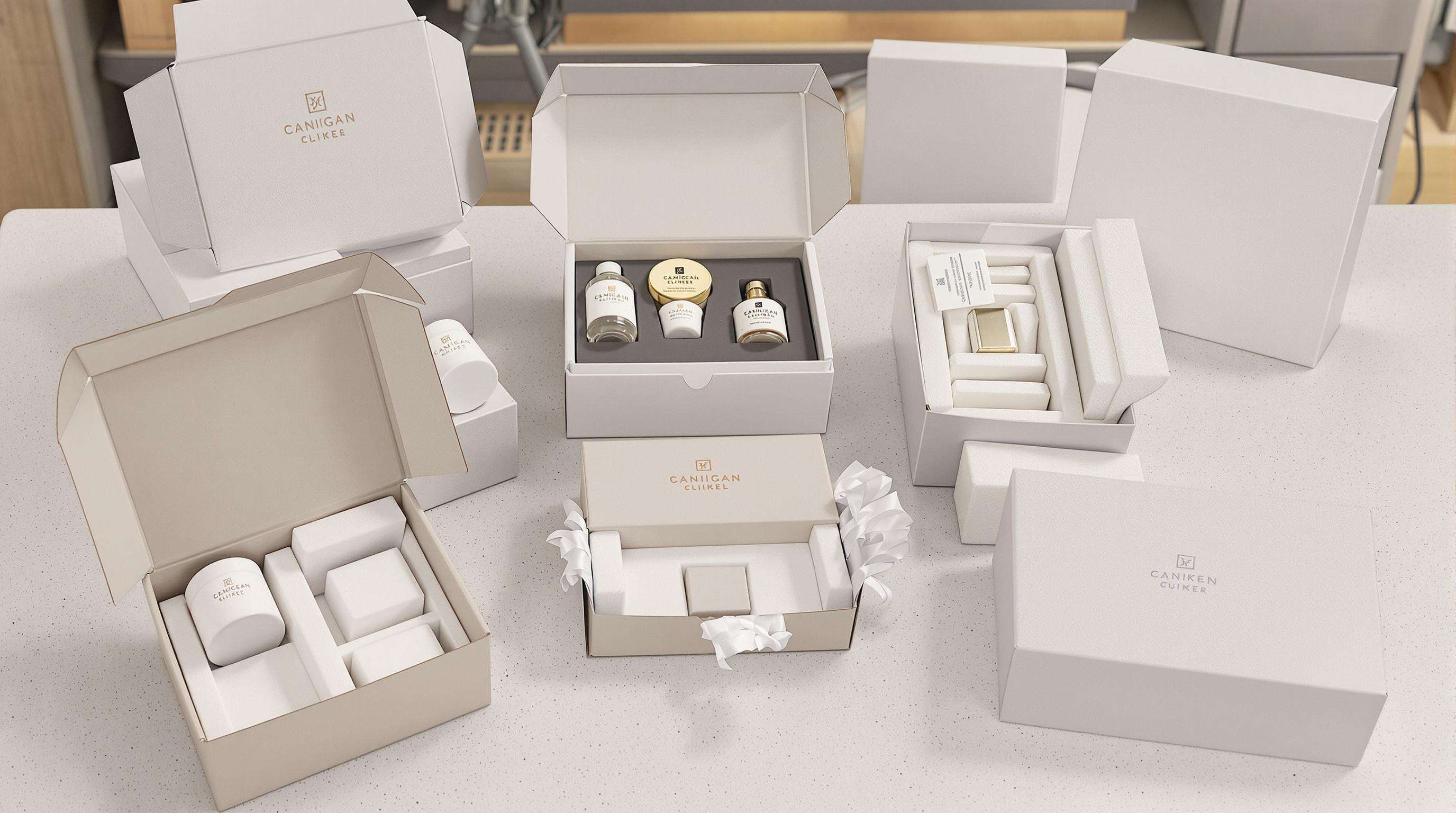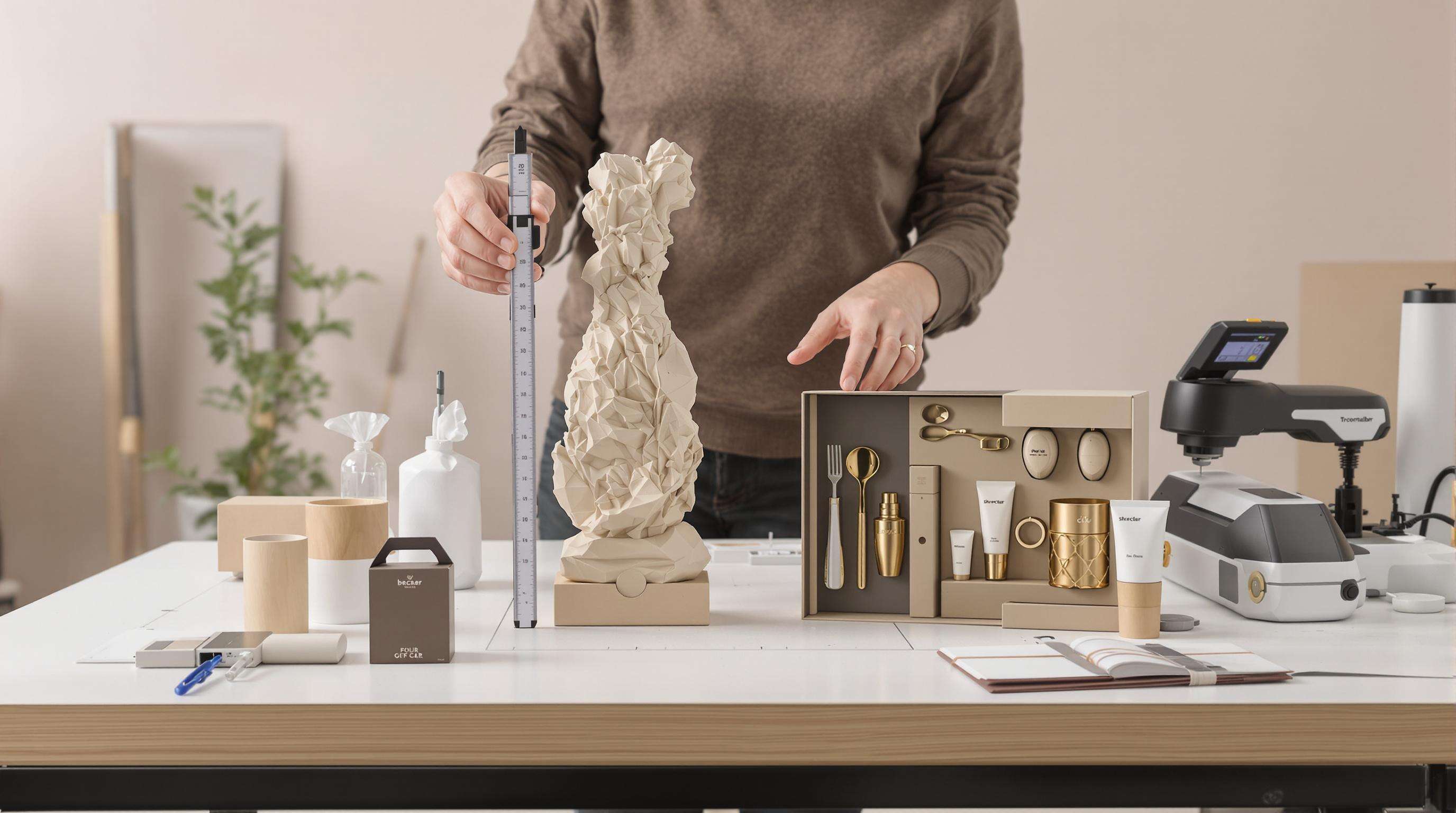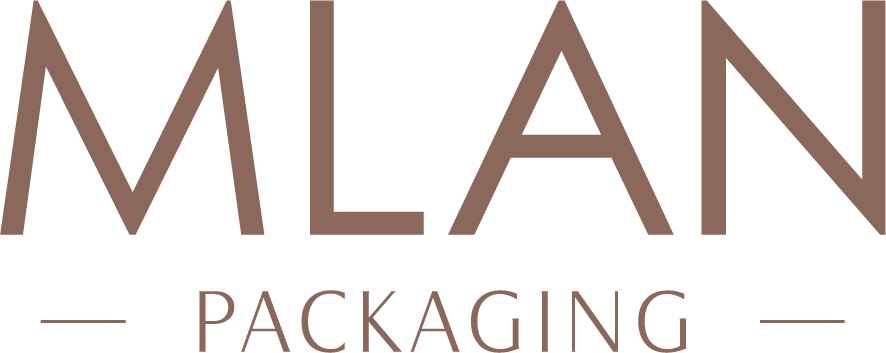Understanding Customized Gift Box Sizing: Fit, Function, and Manufacturing Standards

The Importance of Matching Box Size to Product Dimensions
When gift boxes are properly sized for their contents, they cut down on shipping damage quite a bit actually about 38% according to Packaging Insights from last year. Plus these right-sized boxes save materials too. The sweet spot seems to be around a 2mm gap between whatever's inside and the sides of the box. That little bit of space gives enough cushion but doesn't leave unnecessary empty areas. It really does balance protection needs with being environmentally friendly. On the flip side though, when boxes are too big, companies end up spending extra money on packing materials like bubble wrap or peanuts. We're talking about a 19% jump in those filler costs. And bigger boxes mean items can shift around during shipping, which naturally increases chances of something getting broken or damaged along the way.
How to Measure Items Accurately for Proper Box Fit
Use digital calipers to measure length, width, and height at three strategic points on irregular items. Add 4–6mm to each dimension to accommodate protective liners, in line with ISO 8317:2024 shock-absorption guidelines. For cylindrical objects like candles, apply πr²h calculations to determine volume and prevent rolling during shipment.
Common Sizing Mistakes and How to Avoid Them
- Templating Errors – Assuming all "medium" jewelry boxes fit standard pendants, despite chain lengths varying from 14" to 30"
- Batch Variance – Ignoring 3% material expansion in high-humidity environments
- Prototype Pitfalls – Testing only empty boxes instead of fully packaged products
Standard Size Categories in Custom Gift Box Manufacturing
| Category | Interior Dimensions (LxWxH) | Typical Use Case |
|---|---|---|
| Petite | 50x50x50mm | Earrings, USB drives |
| Slim | 150x80x25mm | Necklaces, pens |
| Cube | 100x100x100mm | Perfumes, artisan soaps |
| Tower | 200x150x300mm | Wine bottles, vases |
Manufacturers follow ANSI/ASQ Z1.4-2023 sampling standards to ensure dimensional consistency across production batches.
Custom Gift Boxes for Jewelry and Fragile Items: Precision, Protection, and Presentation
Ideal Box Dimensions for Rings, Necklaces, and Bracelets
Precision sizing ensures security and visual appeal. Rings typically require compact boxes (2"x2"x1") with foam inserts to prevent movement, while necklaces fit best in elongated designs (6"x3"x1") that minimize tangling. Bracelets are ideally housed in oval-shaped boxes (4"x4"x2") that mirror their circular form.
Incorporating Inserts and Cushioning for Delicate Items
High-density foam and velvet lining reduce impact damage by 67% compared to basic packaging (Packaging Digest 2024). Custom-cut inserts eliminate friction between components, preserving gemstones and polished metal finishes.
Enhancing Unboxing Experience With Magnetic Closures and Satin Linings
Magnetic closures with a 40mm pull force meet ISTA standards for secure yet accessible closure. Satin-lined interiors elevate perceived value–78% of recipients associate them with luxury gifting (LuxePack 2023 Consumer Report).
Protective Sizing Standards for Electronics in Custom Gift Boxes
| Device Type | Foam Cushion Thickness | Internal Compartment Dimensions |
|---|---|---|
| Smartwatches | 0.5" | 2.5"x2.5"x1.5" |
| Wireless Earbuds | 0.75" | 4"x3"x1.25" |
Premium electronics require a 1.5" perimeter foam buffer to comply with ASTM D4169 drop-test standards, ensuring reliable shock absorption during transit.
Sizing Customized Gift Boxes for Food and Temperature-Sensitive Products
Temperature-sensitive packaging considerations
Precise sizing minimizes excess airspace, which accelerates temperature fluctuations in perishable goods. Insulated liners need 15–20mm of internal clearance to maintain safe temperatures for 6–8 hours (FDA 2023 guidelines). Modified atmosphere packaging (MAP) requires ±2mm dimensional accuracy to preserve freshness in chocolate or cheese assortments.
Sizing for gourmet gift sets and seasonal treats
Common dimensions for artisanal food boxes include:
- 200x150x75mm for 12-piece truffle collections
- 300x200x100mm for wine-and-cheese pairings
- 120mm-diameter cylinders for premium teas
Tiered designs with 10–15% vertical spacing between layers prevent crushing while enhancing presentation for seasonal cookies or macarons.
Compliance with food safety and material regulations
Food grade custom gift boxes need at least 5mm space between items and the inside walls if they want to pass EU standard 1935/2004 for material migration. When it comes to those FDA approved foam inserts, manufacturers have to get really precise with laser cutting, keeping within half a millimeter either way so nothing touches acidic foods directly. According to recent NSF checks, most compliant packaging these days uses plant based inks instead of traditional ones. About 92 percent of all properly made packages apply these eco friendly inks somewhere between 3 and 5mm away from where actual food contact happens. This attention to detail isn't just regulatory nonsense but makes sense when thinking about long term brand reputation and customer safety concerns.
Designing Custom Gift Boxes for Irregular and Multi-Item Gifts

Challenges in measuring package dimensions for non-standard items
Gifts that don't fit nicely into boxes tend to need about 25% extra packaging compared to regular shapes according to Packaging Digest last year, so getting measurements right really matters. Start with the longest side first. For something like a tall vase, measure vertically from top to bottom. Sculptures usually work better measured horizontally across their widest part. Don't forget those tricky spots either, like when there's a big base or parts that stick out all over the place. Some companies have taken things further by scanning packages in three dimensions. This creates digital blueprints that help figure out exactly what size box works best while leaving minimal empty space inside.
Using foam inserts and custom dividers for stability
Foam density is more impactful than thickness for protection:
| Foam Type | Density Rating | Best For |
|---|---|---|
| Polyurethane | 1.8–2.2 lb/ft³ | Fragile glassware |
| Polyethylene | 2.8–3.2 lb/ft³ | Heavy metal items |
Multi-compartment designs reduce product movement by 78% during shipping compared to loose packaging (ISTA 2023). Dividers should extend within 0.5" of box walls to prevent shifting.
Case study: Packaging a wine bottle in a personalized gift box
A leading manufacturer achieved a 99.6% safe delivery rate using cylindrical customized gift boxes with these specifications:
- 14.5" height (fits 750ml bottles)
- 4.75" internal diameter
- Shock-absorbent EVA foam neck collar
- Magnetic base to prevent rotation
Strategies for organizing gift sets and care packages
Layer items by weight–place heaviest at the bottom, delicate items on top. Maintain 0.75"–1.25" spacing between components using laser-cut dividers, allowing room for protective wrapping. For mixed-item sets (e.g., cosmetics and accessories), use adjustable compartment systems with removable partitions to accommodate varying product sizes.
The Role of Packaging Aesthetics and Sustainability in Customized Gift Box Sizing
How Box Size Influences Perceived Value and Branding
When it comes to gift wrapping, getting the size right makes all the difference. According to recent market research from 2024, properly proportioned boxes can boost how valuable something looks in the eyes of customers by around 60% over those generic packages. There's actually science behind this too. Leaving about a 2mm space between what's inside and the sides of the box gives that extra touch of quality without compromising how sturdy everything stays. On the flip side, boxes that are way too big just scream wastefulness, whereas ones that fit just right tell consumers someone cared enough to get the details right. That attention to detail matters because when we look at high end brands, roughly three quarters of them have adopted these precise sizing techniques as part of their strategy to maintain that luxurious image they want customers to associate with their products.
Trends in Custom Packaging Design and Branding Elements
The 2024 Packaging Innovations Report shows biodegradable kraft paper adoption growing 42% year-over-year, with telescoping box designs reducing material waste by 28% versus traditional styles. Leading manufacturers now integrate:
- Water-based UV coatings that maintain recyclability
- Origami-inspired folds that eliminate plastic inserts
- AR-enabled sizing guides accessible via QR codes on the box
Consumer Psychology: The Role of Fit and Finish in Gifting
62% of recipients view packaging quality as part of the gift’s inherent value (Consumer Packaging Trends 2023). Crisp embossing (0.3–0.5mm depth) and magnetic closures (4–6 Newton pull force) create tactile engagement that 84% of consumers associate with thoughtful presentation. These details offset 19% smaller box sizes in sustainable systems by enhancing perceived craftsmanship.
Controversy Analysis: Oversized Boxes vs. Sustainable Packaging
Oversized boxes measuring about 55 cubic centimeters have become popular on social media, with some studies suggesting they can increase engagement by roughly 30%. At the same time, most companies cut down their standard packaging size last year as part of efforts to comply with new environmental regulations regarding packing materials. A growing trend among eco-conscious businesses involves creating modular packaging solutions. These are basically stackable gift boxes that snugly wrap around oddly shaped products but can also be expanded for display purposes. Such designs help reduce carbon footprints during transportation while still maintaining that eye-catching presentation customers expect when unboxing their purchases.
FAQs
Why is matching box size to product dimensions important?
Matching box size to product dimensions helps reduce shipping damage, save packing materials, and maintain environmental sustainability.
How do I accurately measure my items for customized gift boxes?
Use digital calipers to measure length, width, and height at strategic points, adding 4–6mm to each dimension to accommodate protective liners.
What are examples of standard size categories for custom gift boxes?
Examples include Petite (50x50x50mm for earrings), Slim (150x80x25mm for necklaces), Cube (100x100x100mm for artisan soaps), and Tower (200x150x300mm for wine bottles).
How do precise box sizes affect perceived branding and value?
Properly sized boxes enhance perceived product value by about 60%, while oversized boxes may seem wasteful.
What are some trends in sustainable custom gift box packaging?
Trends include biodegradable kraft paper, origami-inspired folds eliminating plastic inserts, and AR-enabled sizing guides via QR codes.
Table of Contents
- Understanding Customized Gift Box Sizing: Fit, Function, and Manufacturing Standards
- Custom Gift Boxes for Jewelry and Fragile Items: Precision, Protection, and Presentation
- Sizing Customized Gift Boxes for Food and Temperature-Sensitive Products
- Designing Custom Gift Boxes for Irregular and Multi-Item Gifts
- The Role of Packaging Aesthetics and Sustainability in Customized Gift Box Sizing
-
FAQs
- Why is matching box size to product dimensions important?
- How do I accurately measure my items for customized gift boxes?
- What are examples of standard size categories for custom gift boxes?
- How do precise box sizes affect perceived branding and value?
- What are some trends in sustainable custom gift box packaging?

